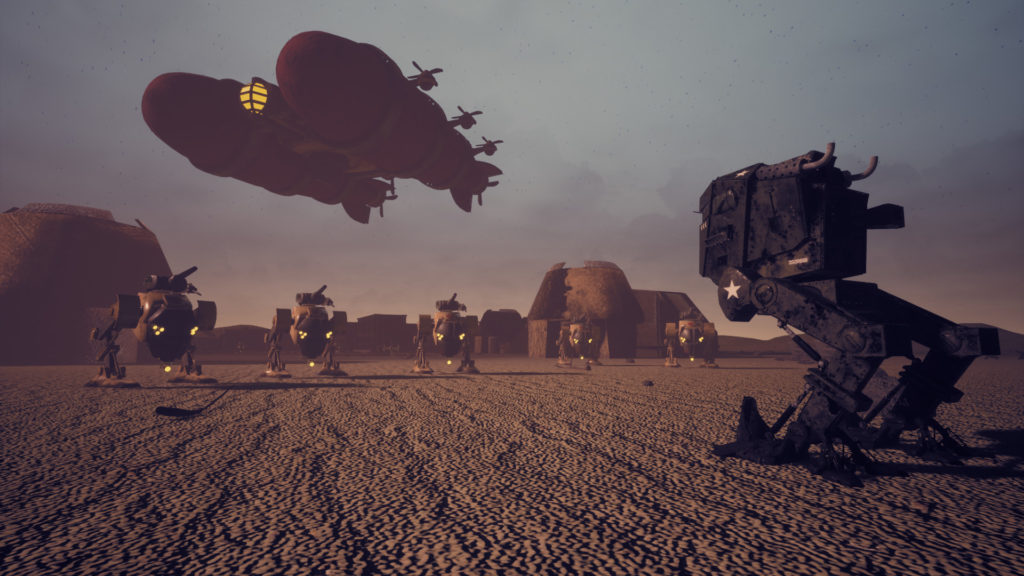
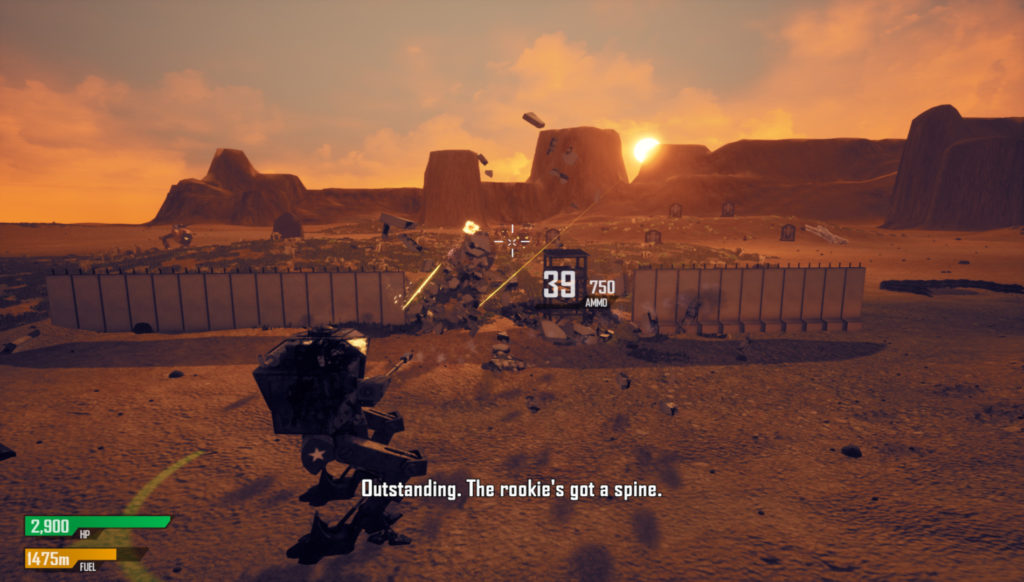
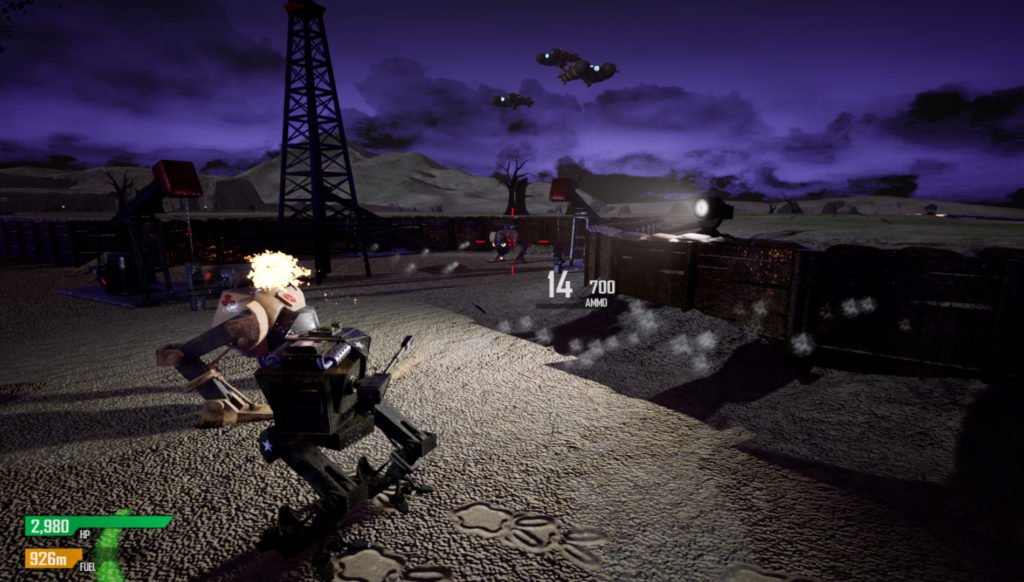
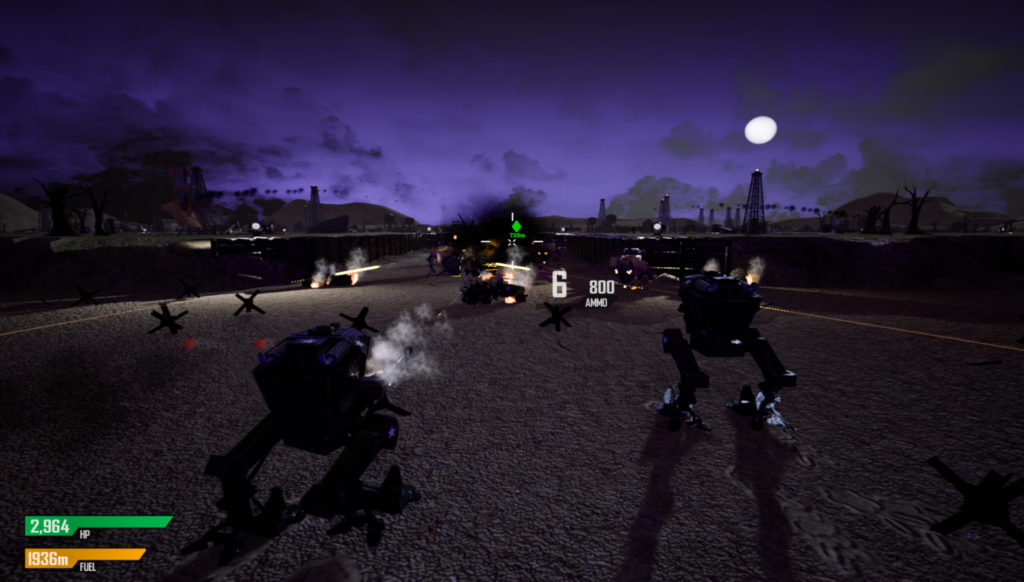
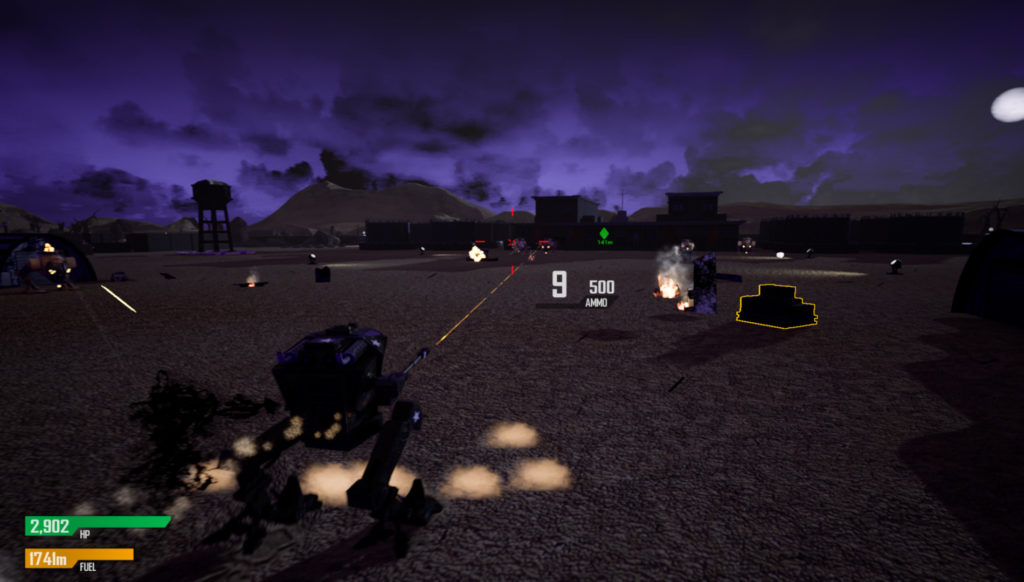

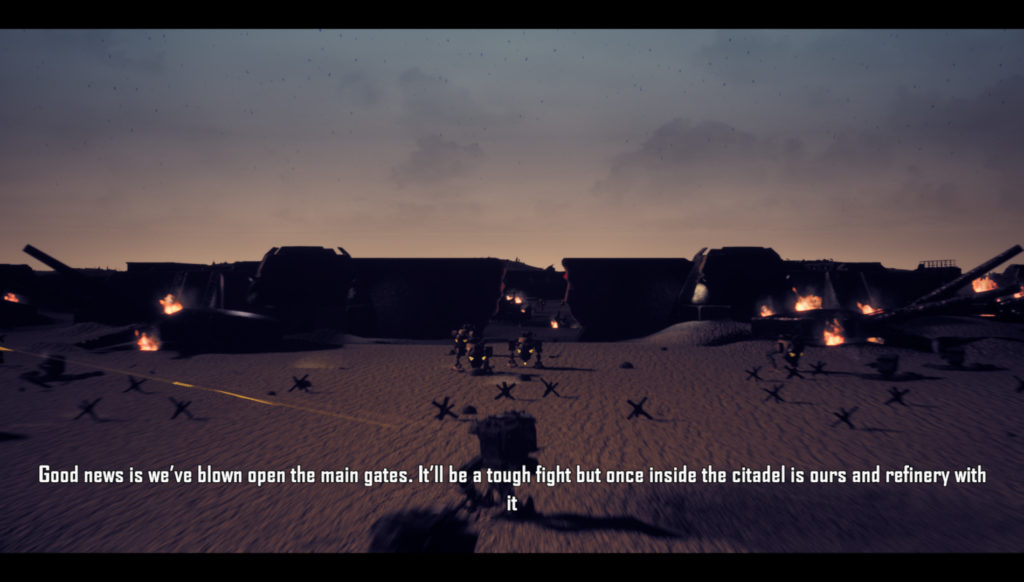
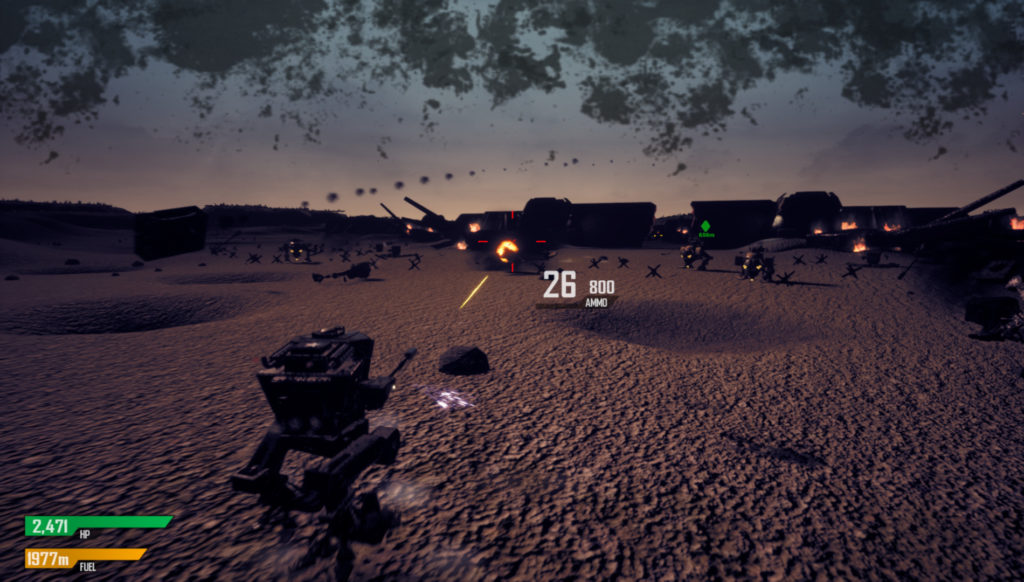
Death by Oil
Role: Creative Director
Team Size: 10
Time: August 2018 – December 2018
Engine: Unreal Engine 4.2
Game Summary
Death by Oil is a tactical mech-shooter. Players take command of a powerful mech in one final, desperate mission to bring an end to a long, drawn-out war. Outnumbered by enemies and with little friendly support, players must manage limited ammo, armor, and fuel to complete their mission. Taking advantage of the mech’s directional armor and careful positioning are the key to success in battle.
Responsibilities
- Design and prototype around the theme of scarcity. This theme was achieved by giving players a fuel gauge, so they had to carefully consider each step. Ammunition and armor plating was also scarce as enemies do not often drop any resources for players to scavenge and supplies scattered throughout the map often involve combat or careful timing to avoid combat.
- Design and prototype bipedal tank combat. These tanks referred to as walkers, trundle through battlefields with turret turning independently of the legs. Walkers also have directional armor as a tank would. Strongest at the front, weakest at the back.
- Design and prototype equipment system for a separate pitch. The basic idea was to let players build their own giant robot, as such we aimed to allow players to swap the robot’s arms, legs, torso, and head while using the same skeleton and animations. It worked but the pitch did not go through due to scope concerns.
- Design 3 enemies. Hostile walkers that patrol the area searching for the player and were reused for friendly AI, turrets, and lastly watch towers that called down artillery on the player’s position. The artillery was a bit much for balance.
- Design and implement the Zeppelin boss. Basically, this boss fly’s over the battlefield raining fire on the player with a large spotlight that lets them know they’re being targeted. Because aerial pathfinding was a huge challenge, we resorted to using a spline for a predetermined flight path.
- Design and implement the game’s narrative. World crafting, visual storytelling in the levels, and writing and the scripts for voiceovers, and cutscenes. I also worked on getting voiceovers recorded before setting up all the triggers to play the lines at the right time, place, and without cutting each other off.
- Crafted 3 expansive battlefields with Unreal’s terrain editor tools. Maps were designed with vehicular combat in mind and several different approaches available to the player. Approaches that focused their challenge on managing their precious resources. For example, one path may have less resistance but take longer and thus consume more fuel where another could be the faster direct approach but would consume a great deal of ammo and potentially armor.
- Design and implement encounters throughout the game. My favorite was the second level, the trenches, where players are dropped in front of a large battle and then make their way through the maze with patrols that can sneak up on them or turrets catch them off guard as they scramble for supplies.
- Design and implemented objectives. The main objectives of the game were to reach a destination or destroy a boss. Secondary objectives for the game were supply points scattered throughout the maps that players could restock at if they found them. The last objective involved capturing a point to call in reinforcements, but it had to be cut due to our timeline.
- Create and implement cutscenes with the use of sequencer to help deliver narrative context to players.
- Iterate on levels, encounters, objectives, cinematics, and balance. Balance was the most important aspect of all as the player had to manage scarce resources in huge maps while outnumbered by their enemies.
- Lead design meetings and discussions.
- Coordinate with the development team to create, assign, review, and complete tasks.
Skills Gained or Improved
- Improved design documentation, and scope management. Documents were not concise at all at the beginning of the project but were drastically improved by the midway point while I learned much about managing scope with our early pitches being far too grand for our timeline.
- UE4 terrain sculpting tools. I never used these tools before this project, but I can now confidently say I can craft just about any level terrain and make any adjustments needed.
- Better understanding of implementing assets in UE4. How to set up materials, static and skeletal meshes, audio cues, and so much more.
- Blueprint programming. Primarily practiced this for our second pitch which focused on high mobility movement systems and player customization.
- UE4 sequencer tools and implementation. Another tool I had never used before and aim to learn more of. I learned how to set up cameras, utilize the different tracks in sequencer and then how to call them from blueprints.
Challenges Overcome
- Design conflicts and confusion arose early on. We resolved these through more in-depth discussions, improving our methods of communication, and drastically improving our documentation.
- Our technical team consisted of one person. We supplemented this with our technical artist, producer, and myself assisting with any technical tasks we could.
- Initial implementation of sequences to gameplay. There were lots of fun issues when learning how to use sequencer. Like the player having full control of their character and ruining cutscenes, or the AI deciding to kill the player during them. But these were all taken care of as I came to better understand the tools.